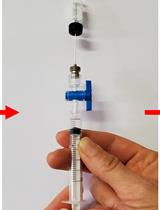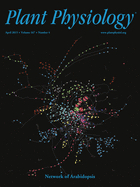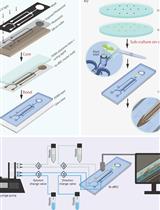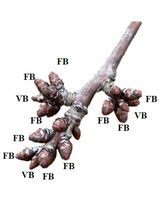- EN - English
- CN - 中文
Rhizosphere Acidification Assay
根际酸化试验
发布: 2015年12月05日第5卷第23期 DOI: 10.21769/BioProtoc.1676 浏览次数: 8466
评审: Tie LiuAnonymous reviewer(s)

相关实验方案

使用气相色谱和火焰离子化检测技术对亚热带乔木作物荔枝(Litchi chinensis Sonn.)叶和芽组织中乙烯产量进行定量分析
Regina B. Cronje and Arnoldus J. Jonker
2023年03月20日 1508 阅读
Abstract
Plant survival depends on the ability of root systems to establish themselves in locations where water and nutrients are available for uptake and translocation (Hawes et al., 2003). Rhizosphere influences crop productivity by mediating efficient nutrient transformation, acquisition, and use (Shen et al., 2013). Rhizosphere acidification is a central mechanism for plant mineral nutrition since it contributes to nutrient solubility and the proton motive force (pmf). This pmf is generated by the plasma membrane H+-ATPases (Miller and Smith, 1996; Forde, 2000) in root epidermal and cortical cells, and is coupled to active nutrient acquisition (e.g., N, K, P). Roots are able to acidify the rhizosphere by up to two pH units compared to the surrounding bulk soil mainly through the release of protons, but also bicarbonate, organic acids and CO2. Here we present an easy and inexpensive protocol to quantify protons released to the media by the root system-a method successfully used in our recently published work (Pizzio et al., 2015).
Keywords: Root (根)Materials and Reagents
- Arabidopsis thaliana seeds (Col-0)
- Eppendorf tubes (1.5 ml)
- Commercial Bleach
- Pipettes and tips (1 and 5 ml)
- Silicon caps (or aluminum foil)
- Square Petri dishes
- Plastic wrap
- Spatula and forceps
- Flasks (200 ml)
- Plastic wrap
- Glass culture tubes
- Tween-20 (Sigma-Aldrich, catalog number: P-1379 )
- Murashige and Skoog medium (MS) (PhytoTechnology Laboratories®, catalog number: M524 )
- Sucrose (VWR International, catalog number: BDH-0308 )
- Potassium Hydroxide (KOH) (Thermo Fisher Scientific, catalog number: P-250 )
- Agar-agar (Sigma-Aldrich, catalog number: A-1296 )
- Sterile distilled water
- MES hydrate (Sigma-Aldrich, catalog number: M-8250 )
- Seed sterilization solution (see Recipes)
- MS solid (see Recipes)
- MS liquid (see Recipes)
- Assay solution (see Recipes)
Equipment
- Autoclave
- Rotary shaker
- Flow hood
- Fridge (4 °C)
- Plant growth chamber (Conviron, catalog number: ATC26 )
- Magnetic stirrer and stirring bars
- pH meter (Beckman Coulter)
Note: pH probe should be capable of measuring pH in samples with volumes <= 3 ml.
- Balance
Procedure
文章信息
版权信息
© 2015 The Authors; exclusive licensee Bio-protocol LLC.
如何引用
Readers should cite both the Bio-protocol article and the original research article where this protocol was used:
- Pizzio, G. A., Regmi, K. and Gaxiola, R. (2015). Rhizosphere Acidification Assay. Bio-protocol 5(23): e1676. DOI: 10.21769/BioProtoc.1676.
- Pizzio, G. A., Paez-Valencia, J., Khadilkar, A. S., Regmi, K., Patron-Soberano, A., Zhang, S., Sanchez-Lares, J., Furstenau, T., Li, J., Sanchez-Gomez, C., Valencia-Mayoral, P., Yadav, U. P., Ayre, B. G. and Gaxiola, R. A. (2015). Arabidopsis type I proton-pumping pyrophosphatase expresses strongly in phloem, where it is required for pyrophosphate metabolism and photosynthate partitioning. Plant Physiol 167(4): 1541-1553.
分类
植物科学 > 植物生理学 > 植物生长
您对这篇实验方法有问题吗?
在此处发布您的问题,我们将邀请本文作者来回答。同时,我们会将您的问题发布到Bio-protocol Exchange,以便寻求社区成员的帮助。
Share
Bluesky
X
Copy link












